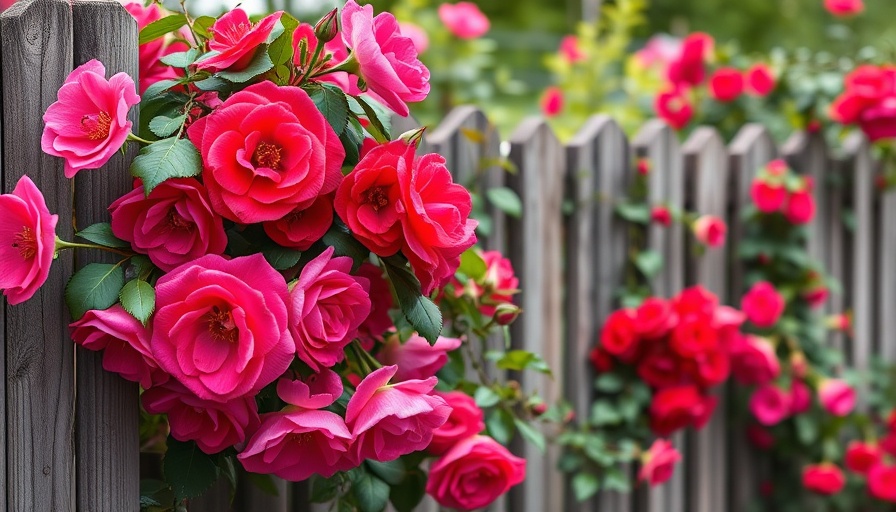
Discover the Beauty of Climbing Roses
There’s something undeniably enchanting about climbing roses, with their vibrant blooms cascading over trellises and arbors, transforming gardens into breathtaking displays of color. Not only do they add aesthetic value to your landscape, but they also offer abundant opportunities for creative gardening.
Understanding Climbing Roses: A Quick Overview
Before embarking on the journey of growing climbing roses, it’s essential to understand their specific needs. Generally, climbing roses are perennial flowering shrubs that thrive in USDA hardiness zones 3-11. They enjoy full sun to partial shade, requiring loamy, rich, well-draining soil with a slightly acidic pH around 6.0-6.5.
With patience, these roses can grow significantly over time, reaching heights of up to 25 feet, depending on the cultivar. Their growth typically spans across spring and fall, offering continuous beauty provided you invest in proper care.
Choosing the Right Cultivars
When selecting the perfect climbing rose for your garden, consider speaking with your local American Rose Society chapter. They can provide invaluable insights on which cultivars thrive in your geographic area and how to tackle potential pests or diseases.
Some popular climbing rose varieties include:
- New Dawn: Known for its pale pink blossoms and disease resistance, ideal for beginners.
- Tangerine Dream: Boasting vibrant tangerine-hued blooms that bring a colorful twist to any garden.
- Climbing Iceberg: This variety produces snow-white flowers that are both fragrant and effortless to maintain.
The Importance of Maintenance
Maintaining climbing roses involves more than just watering. Regular pruning is pivotal to encourage healthy growth and an abundance of blooms. Aim to prune after the blooming cycle finishes, cutting back about one-third of the older canes to promote new growth.
Additionally, attaching canes to a support structure with clips or twine can help direct their growth and prevent tangled messes. Regular inspections for diseases and pests—such as aphids or black spot—will keep these beauties thriving. Implementing organic practices like companion planting can deter unwanted insects.
Propagation Secrets: Growing New Roses
Should you wish to propagate your climbing roses, methods such as cuttings or grafting can be incredibly fruitful. The ideal time for taking cuttings is in late spring or early summer. Select healthy, non-flowering stems and ensure they are around 6 inches long.
To propagate by division, you might consider splitting older rose bushes in early spring when they begin to emerge. Both techniques can lead to new plants, enriching your garden—and potentially, those of your friends and family, if you choose to share!
Using Climbing Roses in Garden Design
When thinking about landscaping ideas, climbing roses offer unique design possibilities. Use them to create beautiful garden borders or to accentuate paths. Pairing climbing roses with other companion plants adds depth to your garden while enhancing the overall aesthetic. Consider incorporating greenery or other flowering plants that bloom at different times to ensure year-round vibrancy.
For those with limited space, vertical gardening can be a viable solution. Utilize trellises, fences, or garden arches to draw the eye upwards, maximizing your growing area.
Common Mistakes to Avoid
Even seasoned gardeners can make mistakes. Here are several pitfalls to steer clear of:
- Poor Soil Selection: Ensure your soil is nutrient-rich and drains well; poor soil can lead to stunted growth.
- Ineffective Watering: Climbing roses need consistent moisture but dislike soggy soils. Establish a watering routine that keeps plants hydrated without overwatering.
- Neglecting Support: Always provide support for your climbing roses; without it, they’ll struggle to thrive and may become unsightly.
Final Thoughts: Your Gardening Journey Awaits
Growing and maintaining beautiful climbing roses is not just about the final product; it’s about enjoying the gardening process. By selecting the right varietals, committing to regular maintenance, and embracing the learning curve involved, you can cultivate spectacular beauty in your garden.
So, grab your gardening tools and get started! For more gardening tips on plant care and landscaping ideas, your local gardening community and resources can provide fantastic support to help you along.
 Add Row
Add Row  Add
Add 




Write A Comment